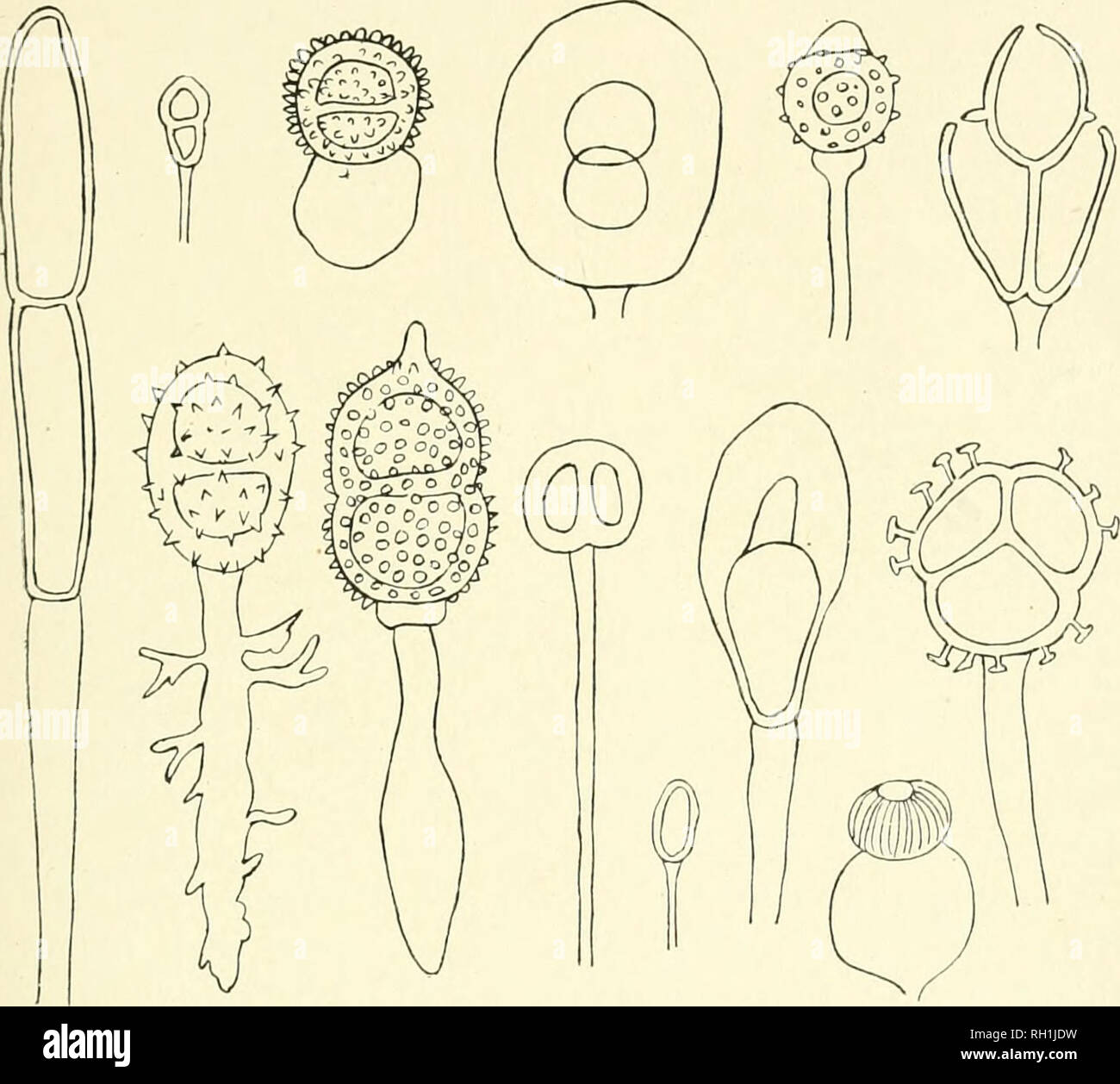. The British rust fungi (Uredinales) their biology and classification. Rust fungi -- Great Britain. TELEUTOSPORES 35 The teleutospores are generally produced in sori like those of the uredospores; they frequently arise on the same mycelium, and very often on the same spore-bed, mingled with the uredo- spores. If both are found in any species, the teleutospores are always formed at least not earlier, and usually later than the uredospores. Their primary function now is to tide over an unfavourable period; for this reason they are sometimes called, in England, winter-spores. They may be one-cel

Image details
Contributor:
Library Book Collection / Alamy Stock PhotoImage ID:
RH1JDWFile size:
7.1 MB (238.4 KB Compressed download)Releases:
Model - no | Property - noDo I need a release?Dimensions:
1667 x 1498 px | 28.2 x 25.4 cm | 11.1 x 10 inches | 150dpiMore information:
This image is a public domain image, which means either that copyright has expired in the image or the copyright holder has waived their copyright. Alamy charges you a fee for access to the high resolution copy of the image.
This image could have imperfections as it’s either historical or reportage.
. The British rust fungi (Uredinales) their biology and classification. Rust fungi -- Great Britain. TELEUTOSPORES 35 The teleutospores are generally produced in sori like those of the uredospores; they frequently arise on the same mycelium, and very often on the same spore-bed, mingled with the uredo- spores. If both are found in any species, the teleutospores are always formed at least not earlier, and usually later than the uredospores. Their primary function now is to tide over an unfavourable period; for this reason they are sometimes called, in England, winter-spores. They may be one-celled as in. Fig. 23. Figures of various Teleutospores of Pucciniaceae (after Sydow). From left to right, they are (in the top row) Puccinia roesteliiformis, P. conspersa, P. globosipes, P. Megatherium, Uromyces gtobosux, Hapalophragmium . Derridis ; (in the second row) P. appendiculata, P. Euphorbiae var. intit- mescens, P. deformata, U. achrous, U. giganteus, U. Ipomoeae, Triphragmium Cedrelae. All x 480. (Non-British.) Uromyces, two-celled as in Puccinia, radiately three-celled as in Triphragmium, cruciately four-celled as in Pucciniastrum, linearly many-celled as in Pliragmidium and especially in Xenodochus (see also Fig. 23). But it is misleading to speak of a many-celled spore: each cell, taken separately, is a spore and can germinate by itself without reference to the others. 3 — 2. Please note that these images are extracted from scanned page images that may have been digitally enhanced for readability - coloration and appearance of these illustrations may not perfectly resemble the original work.. Grove, W. B. (William Bywater), 1848-1938. Cambridge, University Press